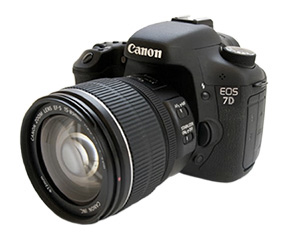 DSLR Video – Pros and Cons
DSLR Video – Pros and Cons
The introduction of video in Digital SLR cameras has given camera professionals the look and feel of film like optical quality from a large array of lenses in a relatively cheap piece of hardware. A large amount of the music videos and adverts you see on the TV today are shot with a DSLR. But before you run out and get the latest video capable DSLR here are some things to consider…
DSLR cameras give you a huge amount of lens options, the kit lenses usually start at about 17mm. This is very wide compared to a compact or video camcorder, great for panaramic scenes and in confined spaces but can cause 2 potential pitfalls that even pros sometimes fall into.
- You get too close to the subject trying to fill the screen, and if that’s a person it can be quite off putting
- Shooting at the wide end of the len’s capabilities will cause distortion. eg. When shooting an interview the speakers face will become elongated and the nose is likely to become enlarged in the frame, making them look strangley morphed.
Filming from further back and zooming in will correct these scenarios…
DSLRs for video has other considerations.
Over the years camera manufacturers have put much research into the ergonomics and ‘ease of use’ features in their video camcorders which is why they all have the same basic shape and share many of the same abilities. DSLR cameras on the other hand have been developed for easy handling when taking still pictures. Their layout and ergonomics are not easy to master when shooting video.
Handling issues include manual zoom and focus and often excludes image stabilisation. Getting steady video from a DSLR can be a tricky business. Part of the joy in using these cameras is the manual functionality. So trying to hold the camera steady while also turning the focus and zoom rings is a difficult task. Add to this the shallow depth of field that comes with a DSLR requiring constant focus adjustments and the task just got harder.
Sound capture is a prime consideration for professionals and should be for amateurs too. If you are to go down the route of shooting video on you spangley new DSLR, then look for one that offers a jack socket for an external microphone. This will give you the option at least to fit an after market external mic to greatly improve your audio quality. Use a shot gun mic for speech and a stereo mic for ambience such as a live event.
These cameras capture in full HD video with high bitrates usually in h.264 format. This means you will need to use high speed storage cards in your camera if you wish to capture video for more than a few seconds at a time. The video data will also require some serious computer power to edit your clips, especially if you wish to add effects and transitions in your final video. Buying a DSLR is a good investment, with a little reading or training you’ll be able master the manual controls and get great images, with a camera that will last many years.
If you want to buy a DSLR to shoot great video the learning curve will be much steeper…
